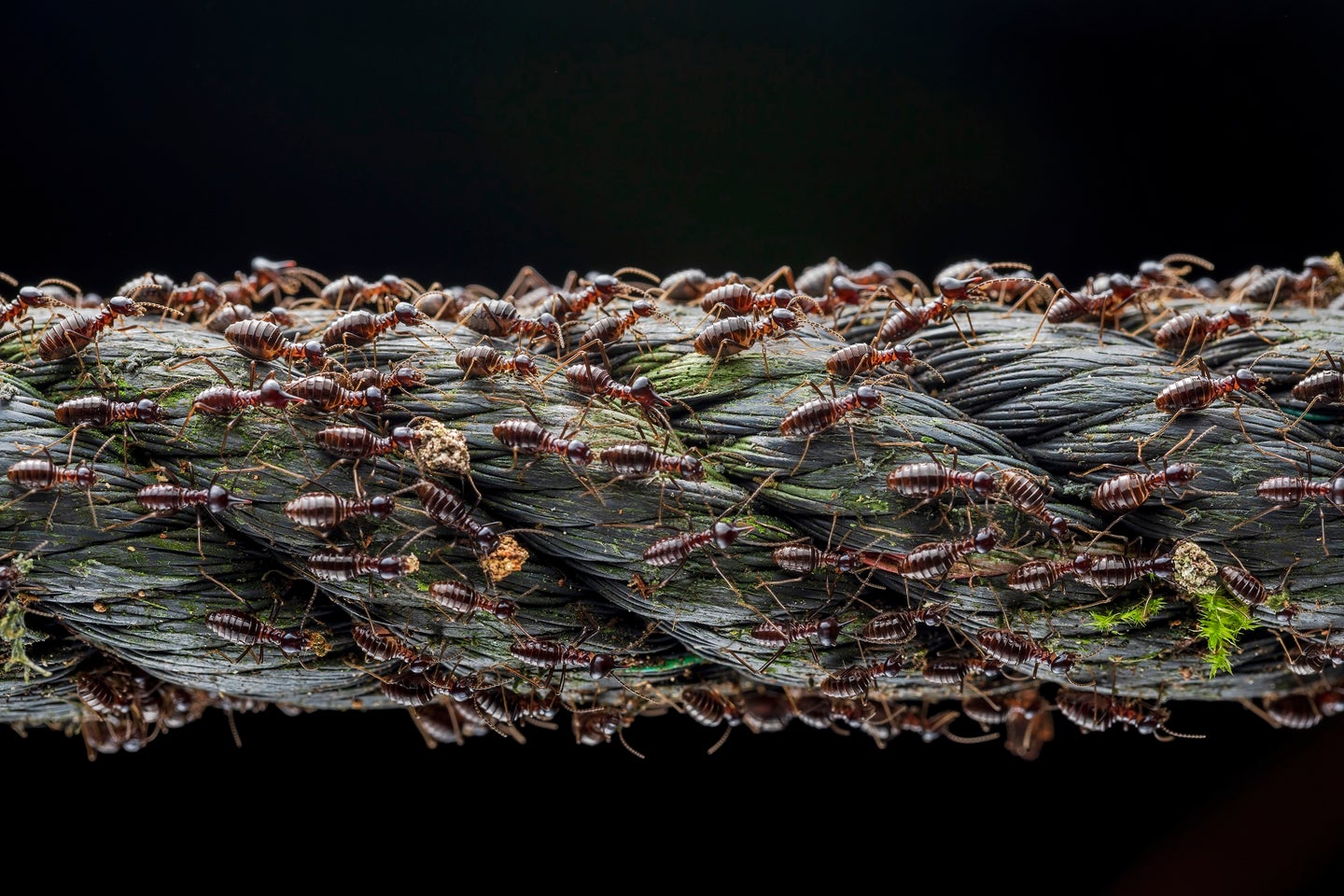These photos are proof that evolution is wild and wondrous
From human evolution to biodiversity, our understanding of life on Earth grows ever sharper.

What can we learn from a zebrafish’s regenerating tail? Or a termite army’s march into uncharted terrain? Welcome to the fields of ecology and evolution, where researchers observe the natural world to better understand how species are shaped by each other and their environments.
In practice, it takes years of notetaking and analysis to break down adaptations and other evolutionary forces. Charles Darwin noticed the uniquely shaped beaks of the Galapagos finches during a five-week foray to the islands, and then spent the next decade and a half trying to make sense of them.
But even a single moment can shed light on an organism’s grind for survival, especially when it’s captured on camera. The BioMed Central Ecology and Evolution image competition highlights photos that show adaptations in action. Experts submit works from lab benches and field sites across the world to vy for the crowning spot in their area of study.
[Related: 14 hypnotizing photos that captured the world during the pandemic]
Here are the judges’ 2021 selections for each category, along with the grand prize winner.